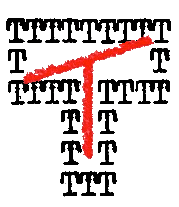By Carrie-Edmund Laben
Horror and weird fiction have tremendous potential to be, not just transgressive, but subversive. The first can be achieved by evoking shock, disgust, or a naughty giggle (notice that I don’t preface any of those words with ‘mere’) but the second requires something more sustained—the working-out of a system. Transgression upsets the system, while subversion hints that it need not or cannot or should not be rebuilt once dismantled.
Consider The Wasp Factory, a 1984 novel by Iain Banks. Forty years after publication, the revelation that shocked readers — “…he’s got a sister”, which is to say, teenage main character Frank Cauldhame is unbeknownst to himself AFAB rather than an accidentally castrated boy-child — may seem quaint, clumsy, and perhaps even offensive to modern readers. Hyper-focusing on the gender reveal at the end of the novel, or on the maggots and dead dogs and dead children that precede it, can disguise Banks’ more subtle methods of creating a sense of unease. While Frank focuses his attention and ire on the reversal of fortune supposedly brought about by the early loss of his penis, another reversal goes almost unremarked-upon in his family structure. To see clearly how this works as an instrument of the uncanny, compare The Wasp Factory with the similarly iconic novel We Have Always Lived In the Castle by Shirley Jackson.
A brief description may be in order for each of these novels. The Wasp Factory is, as mentioned, the story of Francis/Frances ‘Frank’ Cauldhame, living in isolation with his father on a small island in Scotland and awaiting the return of his brother Eric, who has escaped from a mental institution on the mainland. When Eric finally does return, he threatens to blow up the family home, and in the ensuing confusion comes the gender revelation that does explode Frank’s self-image. We Have Always Lived In the Castle is the story of Mary Katherine ‘Merricat’ Blackwood, living in isolation with her older sister Constance and invalid uncle on a New England estate after the murder of the rest of the family, fending off first the hostility of locals and then an attempt by a cousin to steal what remains of the family fortune. In this book Merricat herself is the one who destroys her home by fire to keep it out of her cousin’s hands, and by doing so transforms her own life into a semi-feral existence in the ruins.
Once you start enumerating the similarities between Banks’ Cauldhames and Jackson’s Blackwoods (even the names share a rhythm and ominous root-word connotations), it’s hard to stop. Each story is told through the eyes of a younger sibling who fiercely loves an older sibling. Each younger sibling has a tendency to be solitary and self-reliant in a way associated with precocious maturity. Each, at the same time, presents in some ways as younger than his or her years: Merricat, at 18, still dislikes washing herself, and 16-year-old Frank spends much time in games of make-believe involving toy soldiers. Each older sibling has few other advocates and, through the eyes of the younger, seems unable to advocate for him or her self: Constance has not left the family home in six years while Eric, conversely, has been kept away, confined to a psychiatric institution. Each pair of siblings is largely on their own, with all other siblings trimmed away and the older generation dead, fled, or otherwise incapable.
And then there are two similarities that will stand out most starkly to readers interested in horror. The first: Frank and Merricat both invent elaborate systems of magic and fortune-telling meant to help them protect their homes and families from outside harm. In addition to the titular wasp factory, Frank creates totems festooned with parts of dead animals around the island where his family home is located. These totems serve a practical purpose by attracting scavenging birds whose movements give warning of intruders, but they also convey the same sort of menacing faux-primitivism as the similar structure at the heart of Lord of the Flies. Merricat buries protective charms of various sorts throughout her family’s property and designates words that must never be spoken aloud. The second: Frank and Merricat are both murderers, and murderers of a particular sort. Both committed multiple murders before they reached their teenage years. One is a child serial killer (Frank has killed his younger brother and two cousins in separate incidents), the other a child mass-murderer (Merricat spiked the family sugar bowl with arsenic after a quarrel, resulting in the deaths of both of her parents, another younger brother, and her aunt).
The murderous child is an important figure in horror, terrifying as only a threat from an unexpected direction can be terrifying, shocking as only a blasphemy against a sincerely believed truth can be shocking. Is still terrifying and shocking, in a timeless way, even now that it’s become common. Many works with this character type present one or another explanation that seems to restore, if not normalcy, then a proportional cause-and-effect reasoning: The Bad Seed blames corrupted genetics, The Omen assigns responsibility to Satan, the titular Midwich Cuckoos are aliens, We Need To Talk About Kevin toys with the old notion of the “refrigerator mother” who destroys her children with her own unnatural coldness. The Wasp Factory and We Have Always Lived In the Castle, however, offer only the killer child’s own perspective, and within that perspective the killings require no especially dramatic explanation. The logic of removing an emotional threat with homicidal violence is inherent and symmetrical, whatever outsiders might say about the triviality of the cause and the outrageousness of the effect. It is the same logic that ties a wasp’s fate to the world’s, or a fallen book to a fallen house. It is also the logic of sympathetic magic, the cause-and-effect of ritual, an ecology of supernatural connections.
If we’re talking about ecology, we must look at the habitat in which these characters operate. Here too, the parallels are striking. Both the Cauldhame and Blackwood families are, at the time of their books’ openings, formerly prominent but now marginal in their communities (Frank in fact lives in the town of Cauldhame, named for an ancestor.) And while the decline in status may have been going on for generations, in both cases the jump from mere downwardly-mobile eccentricity to pariah status is recent, within the living memory of the narrator. Eric has committed, and Constance is presumed to have committed revolting crimes. They are cursed and outcast, and their younger siblings thus feel the need to serve as the conduit between them and the rest of the world, despite a general contempt for, and distrust of, that world.
Granted that both narrators are unreliable, there is still a sense that the contempt and distrust are earned. Rural New England and rural Scotland are both presented as falling houses writ large, the townsfolk full of righteous indignation but unable to effectively assert their own judgements or enforce their own morality. Constance has been acquitted, and no one else was convicted of the murder of the late Blackwoods; Eric has escaped from the mental institution that held him, and cannot be recaptured. Beloved as they are by their siblings, Constance and Eric worry their respective larger communities like grit in a shoe, every reminder of their existence creating a low nerve-pulse of hostility and dread. Meanwhile Frank and Merricat and their far more dangerous actions barely register. No wonder these two children come to believe themselves the most capable, controlling forces in their respective worlds, the only ones holding things together — the evidence of their own senses tells them that they are. And they both treat this as a grave responsibility, which it is. Merricat goes so far as to judge the quality of God’s work and find it wanting, wondering why the villagers who torment her were even created.
The controlling, kingly or divine child is almost as alarming as the murderous one, if indeed one can distinguish between the two. The Infancy Gospel of Thomas recognizes this, when a preschool-age Jesus lays killing curses on two playmates who have offended him and blinds their parents for having the temerity to complain (he later reverses both the deaths and the blindings, which qualifies as a miracle.) It would be a stretch to argue for Frank and Merricat as Jesus figures, of course. Nor are they juvenile antichrists; they answer to a logic entirely outside the framework of Christian reasoning. Their intimate, intensely emotional connection to the land, combined with the assumed connection between monstrosity and both outsider-ness and the pre-Christian past that infuses even secular horror in the English-language tradition, makes them fit more comfortably into the tradition of folk horror survivals and recurrences, but even that is not the entire picture. Neither has an explicit pagan lineage or tradition to fall back on, neither was taught their rituals by a forefather or foremother. They are inventing new forms of power for themselves.
What takes these books from transgressive to subversive is that this power works. Merricat and Frank are not detected nor brought to account for their murders. Merricat’s success is almost complete — she is not separated from Constance, and she no longer has to go into town to do her shopping, and along the way she becomes the sort of dark local legend that could easily inspire more conventional folk horror in her own world down the line. Frank’s fate is left in a state of flux at the end of Wasp Factory but his main goals — protecting Eric and the island, creating a sense of foreknowledge and control — he at least temporarily achieved.
Both of these books suggest — and have remained compelling, disturbing works by suggesting — that of course a teenager can invent from the whole cloth a way of playing god, that of course the murderess and the madman can be loved and protected above all others, that of course the family lacking a father or a mother or both is just as powerful as an ‘intact’ one, that of course each outcast has their own world with internal logic and morality, fully as capable of despising us as we are of despising them. In these subversions there is nothing so commanding, right, or natural in the powers that be that a child cannot toss them aside.





